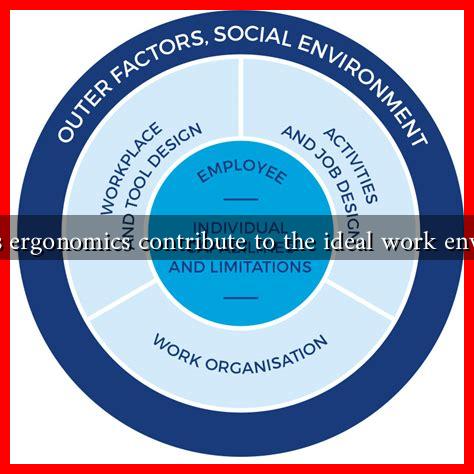-
Table of Contents
How Does Ergonomics Contribute to the Ideal Work Environment?
In today’s fast-paced work culture, the importance of creating an ideal work environment cannot be overstated. One of the key components of this environment is ergonomics—the science of designing the workplace to fit the worker. By focusing on ergonomics, organizations can enhance productivity, reduce injury rates, and improve overall employee satisfaction. This article explores how ergonomics contributes to an ideal work environment, supported by research, examples, and statistics.
The Importance of Ergonomics in the Workplace
Ergonomics is not just about comfort; it is a critical factor in employee health and productivity. Poor ergonomic practices can lead to a range of issues, including musculoskeletal disorders (MSDs), which are among the leading causes of workplace injuries. According to the U.S. Bureau of Labor Statistics, MSDs accounted for 30% of all workplace injuries in 2020.
Key Benefits of Ergonomics
Implementing ergonomic principles in the workplace offers numerous benefits:
- Increased Productivity: A well-designed workspace allows employees to work more efficiently. For instance, a study by the Occupational Safety and Health Administration (OSHA) found that ergonomic improvements can lead to a productivity increase of up to 25%.
- Reduced Absenteeism: By minimizing discomfort and injury, ergonomics can lead to fewer sick days. A report from the National Institute for Occupational Safety and Health (NIOSH) indicated that companies investing in ergonomic solutions saw a 50% reduction in absenteeism.
- Enhanced Employee Satisfaction: Employees who feel comfortable and supported in their work environment are more likely to be satisfied with their jobs. A survey by the American Psychological Association found that 91% of employees believe that a comfortable workspace positively impacts their job satisfaction.
- Lower Healthcare Costs: Ergonomic interventions can lead to significant savings in healthcare costs. The Liberty Mutual Research Institute for Safety reported that for every dollar spent on ergonomic improvements, companies can expect a return of $2 to $6 in reduced workers’ compensation claims.
Implementing Ergonomic Solutions
To create an ergonomic work environment, organizations can take several steps:
- Assess Workstations: Conduct ergonomic assessments of workstations to identify potential risks. This includes evaluating chair height, desk layout, and computer screen positioning.
- Provide Ergonomic Equipment: Invest in ergonomic chairs, adjustable desks, and keyboard trays. For example, a sit-stand desk allows employees to alternate between sitting and standing, reducing the risk of back pain.
- Encourage Breaks and Movement: Promote regular breaks and encourage employees to stretch or walk around. Research shows that short breaks can improve focus and reduce fatigue.
- Offer Training: Provide training on proper ergonomic practices. Educating employees about how to adjust their workstations and maintain good posture can significantly reduce the risk of injury.
Case Studies: Success Stories in Ergonomics
Several organizations have successfully implemented ergonomic solutions, leading to remarkable improvements:
- Google: Google has invested heavily in ergonomic design, providing employees with adjustable desks and ergonomic chairs. As a result, they reported a 20% increase in employee productivity.
- Hewlett-Packard (HP): HP implemented an ergonomic program that included workstation assessments and training. The company saw a 50% reduction in MSD-related claims within two years.
Conclusion
In conclusion, ergonomics plays a vital role in creating an ideal work environment. By focusing on ergonomic principles, organizations can enhance productivity, reduce absenteeism, and improve employee satisfaction. The benefits of investing in ergonomics are clear, with numerous case studies and statistics supporting its effectiveness. As the workplace continues to evolve, prioritizing ergonomics will be essential for fostering a healthy, productive, and engaged workforce. For more information on workplace ergonomics, you can visit OSHA’s Ergonomics page.

